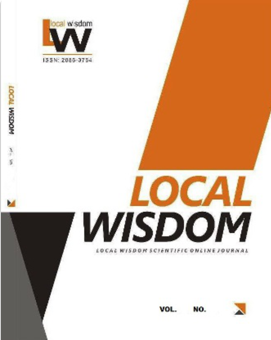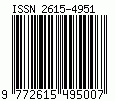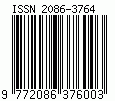The Sustainability of Semarang Kauman Village (When Conservation Meets Development)
DOI:
https://doi.org/10.26905/lw.v16i1.9905Keywords:
Conservation, Development, Kauman Village, SustainabilityAbstract
Semarang has developed as a large coastal city with an important port due to its strategic and unique position. This strategic and unique position is shown by the hills at the top of the city such as Gajah Mungkur, Candi, Mrican, Mugas, Mount Sawo, Simongan and others as well as lowlands at the bottom of the city. One of the important historical ethnic villages to be appointed is Kampung Kauman, Semarang, which has a distinctive history related to the existence of the Great Mosque of Semarang. is an ancient village inhabited by local residents which began to be awakened during the reign of Ki Ageng Padang Aran. The Great Mosque of Semarang, although it is quite an old mosque, is the first mosque in the city of Semarang which was founded by Ki Ageng Padang Aran. The Great Mosque of Semarang is located in the old Semarang square complex which has the same pattern as Javanese city squares in general. There are many opinions regarding the term "kauman". There is an opinion that "kauman" comes from the word: nggone wong qoum (place of the clans), pakauman (place of residence of the clans), sing aman (safe group/people) or there is also the opinion of qo'um muddin (Islamic religious leader). Based on the opinions described above, "kauman" contains the meaning of the residence of the scholars. This study aims to examine the sustainability of residential spaces in Kauman village, both physical and non-physical characteristics and aims to optimize the potential of existing villages for urban development planning. This research uses a descriptive method based on empirical facts. The results of the Kauman Village Residential Spatial Sustainability Research are then used as needed, including development strategies and future city government decisions.
Downloads
References
Badruzzaman. (2008). Perkembangan permukiman diperkotaan. Jurnal “AI-Qalam†No., XIV(Xxi), 75–94.
Cresswell, J. W. (2009). Research Design: Qualitatif, Quantitative, and Mixed Methods Approach (Third Edition). Sage Publication.
Joe, L. T. (1933). Riwajat Semarang Dari Djamannja Sam Poo Sampe Terhapoesnja Kongkoan. Boekhandel Ho Kiem Yoo.
Koentjaraningrat. (1985). Pengantar Ilmu Antropologi. Aksara Baru.
Koentjaraningrat. (2005). Pengantar Antropologi II. Rineka Cipta.
Kostof, S. (1991). The City Shaped: Urban Patterns and Meanings Through History. Thames & Hudson.
Lailawati, F. D. (2020). Penghapusan diskriminasi, ras, dan etnis pembuatan surat keterangan waris yang didasarkan pada penggolongan penduduk. Jurnal Cakrawala Hukum, 11(1), 12–20. https://doi.org/10.26905/idjch.v11i1.4051
Lang, J. (1987). Creating Architectural Theory-The Role of the Behavioral Sciences in Environmental Design. . Van Nostrand Reinhold Company.
Pratiwo. (2010). Arsitektur Tradisional Tionghoa dan Perkembangan Kota (Chinese Traditional Architecture and City Development) (Ombak).
Permen PUPR No.19 Tahun 2021 Petunjuk Teknis Penyelenggaraan Bangunan Gedung Cagar Budaya (https://pustaka.pu.go.id/storage/ biblio/file/buku-i-juknis-bgcb)
Rapoport, A. (1969). House Form and Culture. Prentice Hall Publisher.
Rapoport, A. (1977). Human Aspects of Urban Form Towards a Man-Environment Approach to Urban Form and Design (First Edit). Pergamon Press Ltd.
Sudikno, A. (2017). “Teori dan Metode Pelestarian Arsitektur dan Lingkungan Binaanâ€. Cahaya Atma Pustaka Yogyakarta.
Schulz, C. N. (1984). Genius Loci, Towards a Phenomenology of Architecture. Rizzoli.
Tallo, A., Pratiwi, Y., & Astutik, I. (2014). Identifikasi Pola Morfologi Kota (Studi Kasus : Kecamatan Klojen, Kota Malang). Jurnal Perencanaan Wilayah Dan Kota, 25(3), 213–227. https://doi.org/10.5614/jpwk.2015.25.3.3
Trancik, R. (1986). Finding Lost Space-Theories of Urban Design. Van Nostrand Reinhold Company.
Tunjung, Wijayanti, & Nugroho. (2016). Panduan Jelajah Pusat Kota Semarang Lama-Kota Pusaka Semarang (Guide to Exploring the Old Semarang City Center-Semarang Heritage City). Bakti Budaya Djarum Foundation.
Undang-Undang No 1 Tahun 2011 Tentang Perumahan dan Permukiman
Undang-Undang No 11 Tahun 2010 Tentang Cagar Budaya
Wijayanti, Widya. (2019). Arsitek Indonesia dan Pelestarian Cagar Budaya (Indonesian Architect and Preservation of Cultural Heritage).
Paper presented in the Workshop on basic preservation of cultural heritage buildings conducted by IAI Central Java Province, August 7-8 th, 2019, at Jiwasraya Building, The Old City of Semarang.












